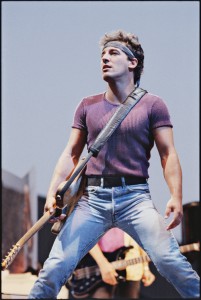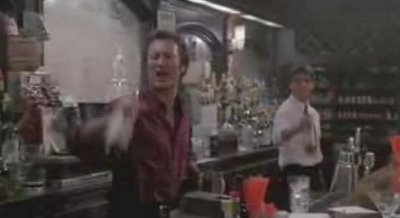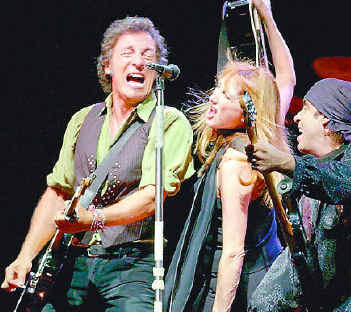
The Boss holsters a la Rambo!
Popular music discussion blog Rock Town Hall has awarded Bruce “The Boss” Springsteen its first-ever Rock Badge of Courage for His heroic efforts to lift “Born in the USA” to the anthemic heights the song required.
The Rock Badge of Courage is the highest artistic decoration awarded by Rock Town Hall, even higher than induction in the Hall’s Foyer of Fame. It is bestowed on musicians who distinguish themselves “conspicuously by gallantry and intrepidity at the risk of his or her artistic cred above and beyond the call of duty while engaged in an action against The Man, apathetic bandmates, or any other enemy of The Power & Glory of Rock.”
Although the song “Born in the USA” first saw the “light of day” while being composed for possible inclusion in the Michael J. Fox/Joan Jett movie of the same name, the rocking studio version had yet to be recorded as Bruce and His E Street Band neared completion on their 1984 album. With the band off for Presidents’ Day and The Boss anxious to record this passionate tribute to veterans of the Vietnam War, he took matters into his own hands. For the rhythm track He looped a recording of Max Weinberg‘s kick-and-snare drum check at the old Meadowlands. For the distinctive synth riff He called on the services of His 12-year-old nephew, Nelson, who had recently received a Casio keyboard for Christmas. Bruce played the rest of the tracks and singlehandedly carried the slipshod arrangement on the strength of his lyrics and vocal performance.
Rock Town Hall’s Rock Badge of Courage Commission is accepting nominations for future recipients of this honor.






